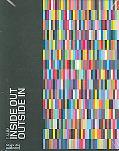

 |

|

The average rating for Rmjm Inside Out Outside in More Than Architecture based on 2 reviews is 3 stars.
Review # 1 was written on 2011-08-13 00:00:00 Jason Stevenson Jason StevensonI am charitably giving "Architecture in Cincinnati: An Illustrated History of Designing and Building an American City" two stars. Cincinnati is, architecturally speaking, the most underrated city in the nation, especially when referring to its enormous but largely underappreciated stock of historic buildings. "Architecture in Cincinnati" does a great disservice to the Queen City's architectural patrimony as a narrow, cursory, and inadequate examination of Cincinnati's architecture. The book's problems are due to a puzzlingly narrow examination of the city's architectural history. The author, Sue Ann Painter, seems to have put herself in a hole with her subtitle ("An Illustrated History of Designing and Building an American City"), a hole she cannot extricate herself from. The book only examines Cincinnati's architecture through the lens of national architectural trends, with other factors ignored. After reading the book, I have a better idea what was occurring nationally in regards to architecture than what was occurring in Cincinnati. The author, perhaps showing a bias as executive director of the Architectural Foundation of Cincinnati, loves to focus on projects by well-known national architectural firms, whether they are great projects (H. H. Richardson's Chamber of Commerce) or not so great (several SOM glass boxes). The author also further narrows the book's limited focus by completely excluding residential architecture. Since residential architecture, especially middle and working class houses, is often a more vernacular architectural expression, it would have been difficult to include while maintaining the narrow "American City" starchitect perspective on Cincinnati. This exclusion has geographic consequences since many neighborhoods are completely residential with the exception of schools and churches. Those neighborhoods are excluded from the book. Ironically, by excluding residential architecture from the book, Painter misses opportunities to reinforce her thesis of Cincinnati as an "American City." For instance, she mentions Cincinnati's affinity for Second Empire architecture when discussing Alfred Mullet's Federal Building, a large mansard roofed pile. What would be a much more persuasive is to use the townhouses of Dayton Street, the West End, Over-the-Rhine, and Kenyon-Barr or the hilltop cottages of Mt. Adams, Price Hill, and Knox Hill to say that Cincinnati was a mansard roofed Paris in America. As other reviewers have noted, this book greatly suffers from poor photography, unforgivable in a book that is billed as "An Illustrated History." The photographs have few to no redeeming qualities with a mixture of poor composition, low resolution, and bad lighting. The photographs often resemble those found on the Hamilton County Auditor's website, which is hardly a gallery of photographic excellence. The photographs lack any perspective correction, a prerequisite for all serious architectural photography. As one of the most, if not the most important aspects of architectural photography, for an architectural foundation to sponsor the publication of an illustrated architectural history without perspective corrected photographs is sloppy, lazy, incompetent, or all of the above. I am charitably giving "Architecture in Cincinnati" two stars. For its numerous faults, it does make a good, very basic introduction to Cincinnati's architectural heritage. The book is a good one for a person who does not know much about architecture in Cincinnati or architecture in general. Despite or perhaps because of the cursory, butchering examination of the subject matter, Cincinnati's architecture is so impressive that readers of this book will walk away wanting to know more about this city's great built environment. Then again, if the author had written a better book and the photographer had taken better photographs for the book, readers would not have to look elsewhere for information that should be in "Architecture in Cincinnati: An Illustrated History of Designing and Building an American City." |
Review # 2 was written on 2010-01-10 00:00:00 Derek CommonCobin Derek CommonCobinPerhaps too ambitious of a topic for a single book. There isn’t great depth to any of single building profiles. Certain chapters are much better than others. |
CAN'T FIND WHAT YOU'RE LOOKING FOR? CLICK HERE!!!